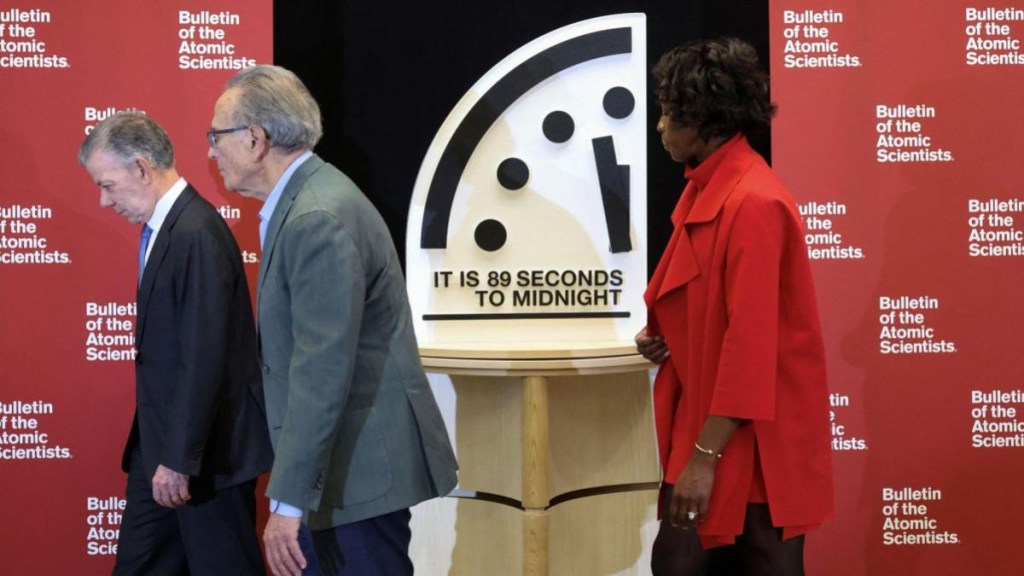For the first time in three years, the Bulletin of the Atomic Scientists (BAS) on January 28 advanced the Doomsday Clock by one second, setting it at 89 seconds before midnight. This latest adjustment marks the closest the world has been to a theoretical point of total destruction in the clock’s 78-year history.
The BAS cited multiple escalating threats—including nuclear tensions, climate change, bioweapons, infectious diseases and the disruptive potential of artificial intelligence (AI)—as key factors behind the decision.
In a statement issued on Tuesday, the BAS emphasised the gravity of the situation and said, “In setting the clock one second closer to midnight, we send a stark signal. Conflict in the Middle East threatens to spiral out of control into a wider war without warning. The Russia-Ukraine war could become nuclear at any moment due to a rash decision, accident or miscalculation.”
The organisation further warned that the world is already on the brink of catastrophe. “A move of even a single second should be taken as an indication of extreme danger and an unmistakable warning that every second of delay in reversing course increases the probability of global disaster,” the BBC reported.
The BAS underscored that the world’s most powerful nations—specifically the United States, China, and Russia—must take responsibility for de-escalating global threats and steering humanity away from catastrophe. Daniel Holz, chair of the BAS, reinforced this urgency, calling the move “a warning to all world leaders”.
Originally introduced in 1947 during the Cold War, the Doomsday Clock was set at seven minutes to midnight to alert the public about the risks of global destruction. Since then, the BAS, alongside a panel of experts—including 10 Nobel laureates—has annually assessed existential threats to determine whether the hands of the clock should move closer to or further from midnight.
